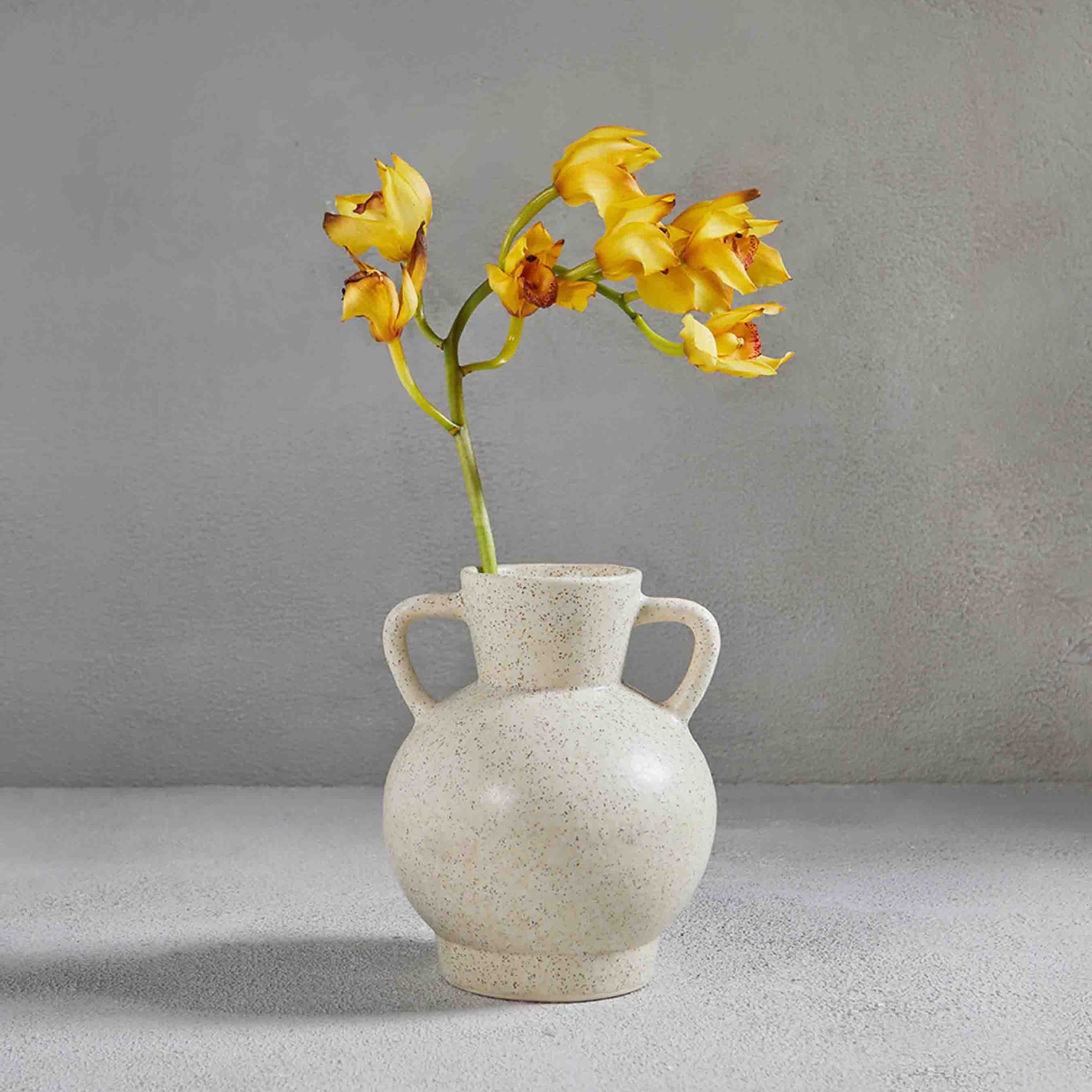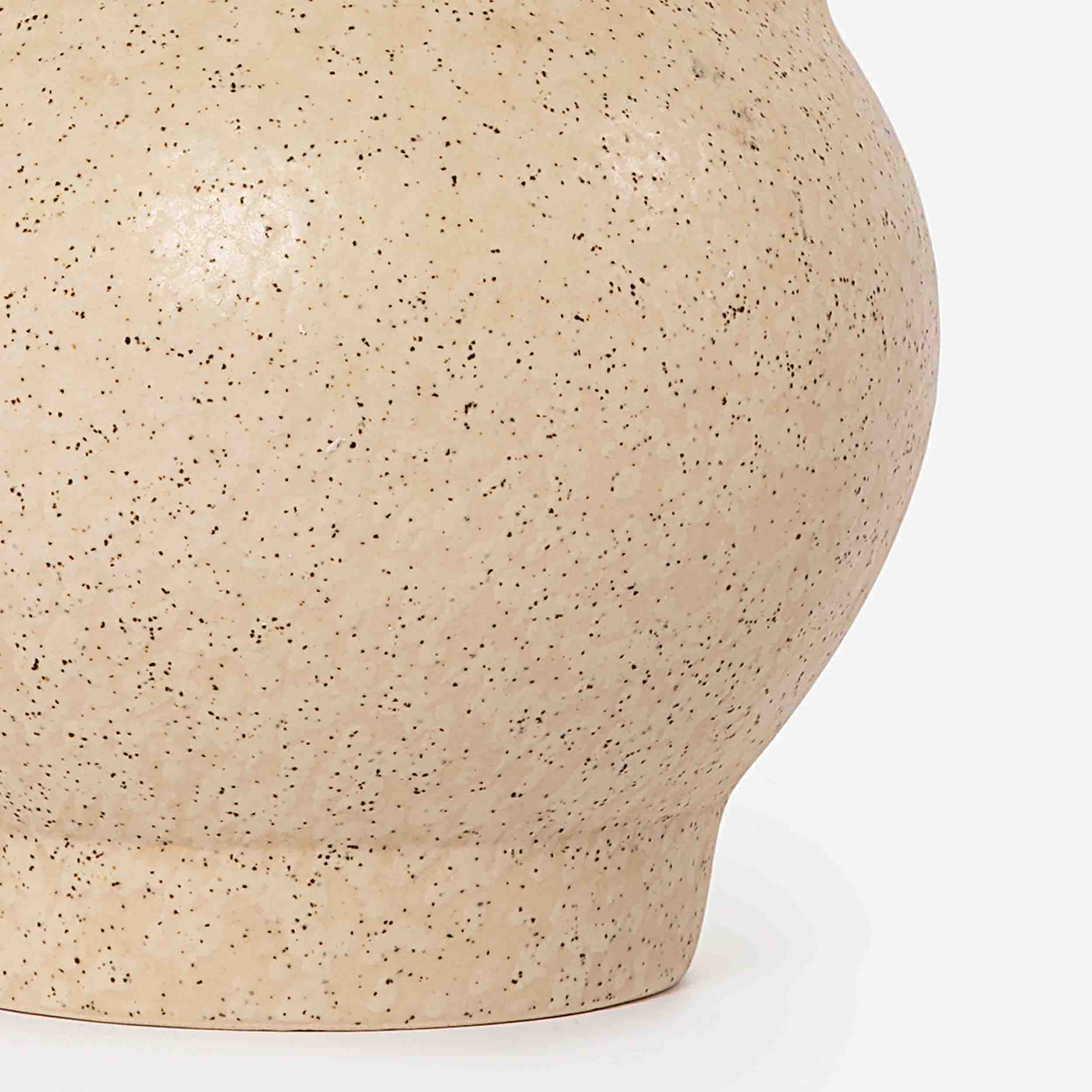NEEL VASE (SET OF 2)
A tall, slim vase that doubles up as an accent piece in an oft-forgotten corner
A tall, slim vase that doubles up as an accent piece in an oft-forgotten corner
Craft Type: Stoneware
This handcrafted cylindrical vase adds an immediate statement to the room. Perfect for fresh or dried flowers, it can feel at home on a table in a hallway as easily as it can liven up a master bedroom. You can also use it just by itself, as a piece of decor.
This product is handcrafted and therefore slight variations in colours, textures and forms are inevitable and aren’t flaws.
Made in: Uttar Pradesh
Material: Stoneware
Dimensions (cm): Big Vase: 11.2(L) x 11.2(B) x 15.1(H); Dia: 11.2
Small Vase: 10.5(L) x 10.5(B) x 10.2(H); Dia: 10.5
Dimensions (inches): Big Vase: 4.4(L) x 4.4(B) x 5.9(H); Dia: 4.4
Small Vase: 4.2(L) x 4.2(B) x 4(H); Dia: 4.2
Weight: 1380 grams
No. of pieces in a set: 2, Set of Two Vase
Clay, a natural material, is used to make ceramic wares. It is kneaded and then thrown on a pottery wheel, where it is shaped by hand into this product. The clay product then goes through the process of bisque firing, glaze application, drying, and then glaze firing to make the final ceramic product.
Pottery in the Indian subcontinent has a long history — it has existed as a craft form for centuries. Evidence of earthenware has been found in the early settlements of Lahuradewa and later during the Indus Valley Civilization. Recent times have seen pottery taking on modern design sensibilities, aided by artists and potters that are breathing new life into the craft form. Studio pottery in India is said to have been started by Rabindranath Tagore in Shantiniketan, West Bengal. It further branched out into two styles, which developed in Delhi under Gurcharan Singh and in Pondicherry under Ray Meeker’s Golden Bridge Pottery.
- Wash by hand only, using a mild dishwashing soap. Dry using a soft towel or tissue before storing.
- Description
- Process & Craft
- Care
Craft Type: Stoneware
This handcrafted cylindrical vase adds an immediate statement to the room. Perfect for fresh or dried flowers, it can feel at home on a table in a hallway as easily as it can liven up a master bedroom. You can also use it just by itself, as a piece of decor.
This product is handcrafted and therefore slight variations in colours, textures and forms are inevitable and aren’t flaws.
Made in: Uttar Pradesh
Material: Stoneware
Dimensions (cm): Big Vase: 11.2(L) x 11.2(B) x 15.1(H); Dia: 11.2
Small Vase: 10.5(L) x 10.5(B) x 10.2(H); Dia: 10.5
Dimensions (inches): Big Vase: 4.4(L) x 4.4(B) x 5.9(H); Dia: 4.4
Small Vase: 4.2(L) x 4.2(B) x 4(H); Dia: 4.2
Weight: 1380 grams
No. of pieces in a set: 2, Set of Two Vase
Clay, a natural material, is used to make ceramic wares. It is kneaded and then thrown on a pottery wheel, where it is shaped by hand into this product. The clay product then goes through the process of bisque firing, glaze application, drying, and then glaze firing to make the final ceramic product.
Pottery in the Indian subcontinent has a long history — it has existed as a craft form for centuries. Evidence of earthenware has been found in the early settlements of Lahuradewa and later during the Indus Valley Civilization. Recent times have seen pottery taking on modern design sensibilities, aided by artists and potters that are breathing new life into the craft form. Studio pottery in India is said to have been started by Rabindranath Tagore in Shantiniketan, West Bengal. It further branched out into two styles, which developed in Delhi under Gurcharan Singh and in Pondicherry under Ray Meeker’s Golden Bridge Pottery.
- Wash by hand only, using a mild dishwashing soap. Dry using a soft towel or tissue before storing.
Country of Origin: India
Manufacturer Details: Shahnawaz Pottery Work : Moondakhera Crossing, G.T Road, Bulandshaher, Khurja, Uttar Pradesh - 203131












